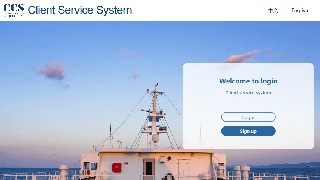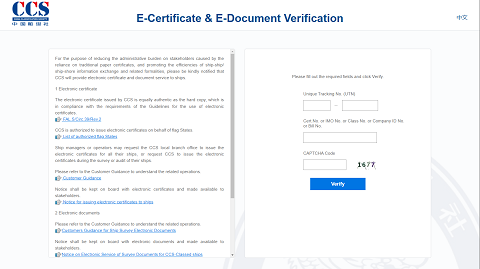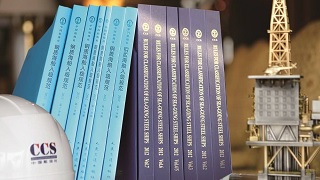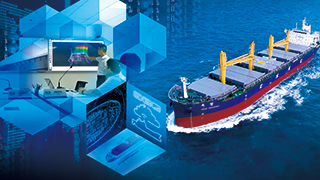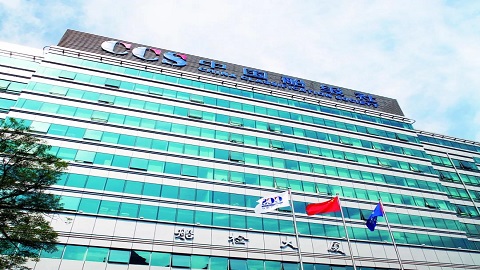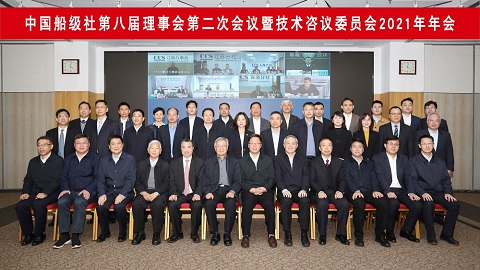Main contents of revisions are as follows:
PART ONE
PROVISIONS OF CLASSIFICATION
Adding new class notations, e.g. Geotextiles
Layer (Geotextiles layers), Ferry Passenger Ship (Ferry passenger ships), ASMW
(Operational guidance for ships in high sea conditions), WAP(ROTOR) (Rotor
assisted propulsion system), RWA (Reduced anchor weight), PSD (Rotating duct in
front of propellers), SOLAS XII, HMS(Ln), OCCS Ready etc.; revising class
notations, e.g. Chemical Barge (chemical barges), Gas Barge (gas barges),Woodchip
Carrier (woodchip carriers). Revising certification requirements related to
EGCS; adding List of certification requirements for methanol fuel system
specialized products; adding certification requirements for “Telescope gangway”,
“Cycloidal steering oar”, “Fume exhaust valve”. Adding survey requirements for watertight
cable transits on sea-going ships engaged on non-international voyages. Revising
definitions of “oil tanker”, “double hull oil tanker”, “ballast tank of a bulk
carrier” and “ballast tank of a double skin bulk carrier”. Revising conditions
where cargo tank testing carried out by the ship’s crew under the direction of
the Master may be accepted by the Surveyor at special surveys of oil tankers;
adding requirements for “Examination of double-side skin void spaces for bulk
carriers exceeding 20 years of age and of 150 m in length and upwards”; with
regard to intermediate surveys of bulk carriers, enhance survey requirements
for ballast tank coating. Refining requirements for “Survey related to notation
SCM”. Clarifying that corrosion renewal criteria different from traditional
rules are used for ships constructed in accordance with Rules for Structures of
Container Ships and ice-strengthened structures.
PART
TWO HULL
1)
Incorporation of IACS mandatory requirements: clarifying requirements for small
hatches on container ship giving access to a cargo hold in accordance with IACS
UR S26 (Rev.5); adjusting requirements for minimum thickness of the plate of
sea-going ships with L<65m in accordance with IACS UR S3 Rev.2; revision
made in accordance with IACS UR S21 Rev.6. UR S21 Rev.6 integrates the original
UR S21A and UR S21, applicable to a wide range of hatch cover requirements;
fully incorporating newly released IACS UR S35, which gives general process of
buckling assessment; revising relevant requirements for rudders in accordance
with IACS UR S10 (Rev.7); adding mooring and anchoring requirements for tugs
under 45 m in length intended for towing service only or for ships of length
less than 90 m in accordance with IACS UR A1 (Rev.8); revising the guidelines
for calculation of bending moment and shear force distribution of rudder-rudder
stock in accordance with IACS UR S10 (Rev.7); incorporating requirements of IACS
Rec.10 (Rev.5), as an alternative, direct force calculation may be performed to
determine the necessary anchoring equipment for monohull ships with length less
than 90m.
2) Revision
of technical requirements: revising technical requirements for butt weld of plates
of different thicknesses; deleting technical requirements for occasionally
carrying bulk cargo; revising the definition of a bulk carrier applicable to
the chapter on bulk carriers as a typical bulk carrier, along with
corresponding revisions, deleting the technical requirements for woodchip carriers;
adding technical requirements for external glass balustrades, with provisions
for glass material, thickness and connection means; Adjusting "nominal
thermal Boil Off Rate" to "nominal daily Boil Off Rate"
according to the general terminology of the industry; sorting out requirements
for ice-strengthened parts in accordance with the latest Finnish-Swedish Ice
Class Rules (FSICR).
3) Newly added or revised class notations and
requirements: adding technical requirements for operational guidance for ships in high sea conditions and adding ASMW notation;
clarifying that provisions for energy-saving appendages in front of propellers
are optional and adding a new class notation: PSD; with the addition of SOLAS
XII notation, revising the relevant descriptions so as to apply to the relevant
circumstances; coordinating "Ro/Ro Ship" into "Ro-Ro Ship";
adding the definition and class notation for ferry passenger ships; adding the
definitions, class notations and reference to relevant technical requirements
for chemical barges and gas barges.
PART
THREE MACHINERY
INSTALLATIONS
Revising requirements for valve type on collision bulkhead in
accordance with resolution MSC.474(102); refining NDT requirements for cylinder
head of diesel engine. Providing the definition of “totally new design” of
turbocharger and refined containment safety in accordance with URM73 Rev.2. Revising the acceptable factor
calculation formulae of crankpin and journal fillet in Guidance for Evaluation
of Fatigue Tests of Crankshafts in accordance with URM53 Rev.5. Adding relevant
requirements for type test of pressure relief systems for inlet and outlet
manifolds of gas fuel engines in accordance with URM82. Adding general
requirements, design requirements, special design requirements and related
tests for the safety of methanol/ethanol fuel engines. Adding the condition
where the generator electrical degree is not limited to 3.5°. Partial update
according to FSICR 2021.
PART FOUR ELECTRICAL INSTALLATIONS
Clarifying requirements when vehicles with
fuel in their tanks for their own propulsion are carried in ordinary cargo
spaces; revising requirements for electrical equipment of certified safe type
when carrying ammonium nitrate fertilizer; improving requirements for cargo
hold water ingress detection and alarm; revising test items of transformers;
clarifying the contents of report of machines routine tested of rotating
machines.
PART FIVE REFRIGERATED CARGO INSTALLATIONS
According to the actual arrangement of the
manufacturer’s refrigerating plant compressor, condenser is generally fitted after
the compressor. High pressure alarm and automatic shutdown protection action
are generally fitted at the delivery side of the compressor by the
manufacturer. The delivery pressure is generally determined by the condensing
pressure, and the alarm requirement of excessive high pressure in condenser is
deleted. At the same time, the relief valve and safety disc arrangement
requirements are added to facilitate implementation.
PART SIX FIRE PROTECTION, DETECTION AND EXTINCTION
(1) In 2.2.1.3, Section 2, Chapter 2 of PART
SIX, “stations” or “container storage rooms or control stations” is replaced by
“storage rooms of extinguishing medium” to avoid misunderstanding.
(2) In accordance with the latest revision of
IACS UR F42, deleting 3.4.12 “Fire testing of flexible
pipes”, Section 4, Chapter 3 of PART SIX.
PART SEVEN AUTOMATION SYSTEMS
Incorporating IACS URE22 Rev.3 and introducing the concept that the category of a system shall
always be evaluated in the context of the specific vessel in question; clarifying
the roles of systems integrators and system suppliers, and specifying in detail
survey requirements for integrators and suppliers at different stages.
PART
EIGHT ADDITIONAL REQUIREMENTS
Based on
industry feedback, adding a new Chapter 17 Additional requirements for geotextiles
layers where the Geotextiles Layer notation is added and technical requirements
for geotextiles layers are supplemented by referring to technical requirements
for cable layers and pipe layers; adding a new Chapter 37 Additional
requirements for carrying dry cargo in bulk where the notation SOLAS XII for
carrying dry cargo in bulk (only satisfying applicable requirements in SOLAS
XII) and relevant requirements are supplemented. In addition, for Chapter 13
Additional requirements for polar class ships, refining regulations specially
considered by classification societies based on UR I2 and fully incorporating UR
I3. For Chapter 24 Additional requirements for stand-by ships and rescue ships,
making a distinction between requirements for stand-by ships and rescue ships
based on different operational scenarios and functions. Editorial revisions in
other chapters.
PART NINE COMMON STRUCTURAL RULES FOR BULK CARRIERS AND
OIL TANKERS
Incorporating IACS CSR 2023 RCN, including: clarifying
the calculation method for unusual arrangements with 5 or more dunnages per row
of steel coil; clarifying that steel coil load of stiffeners is to be
calculated from bending effective span; clarifying the application of requirements
for minimum net thicknesses of bilge plating; clarifying the standards to
determine the size of stiffeners used for Permanent Means of Access (PMA);
clarifying the assessment method of proportions of web plate of PSM; clarifying
the calculation method of hot spot location and stress for corrugated bulkhead
to lower stool connection and radiused upper hopper knuckle connection;
clarifying design load set of bulk carriers less than 150 m in length; deleting
rules formulae for stiffeners and primary supporting members of variable cross
section on cargo hatch covers.
PART
TEN SHIPS IN RESTRICTED SERVICE
Clarifying that relevant requirements for surveys of propeller
shafts and tube shafts are given in Section 12, Chapter 5, PART ONE of the
rules; further clarifying the specified value of thickness of the plate keels
of ships in restricted service to avoid ambiguity.
Note: If you need to reprint, please indicate the source of the information.

